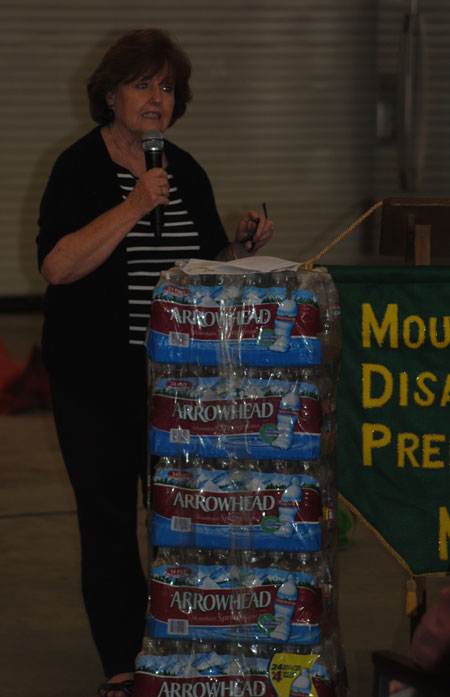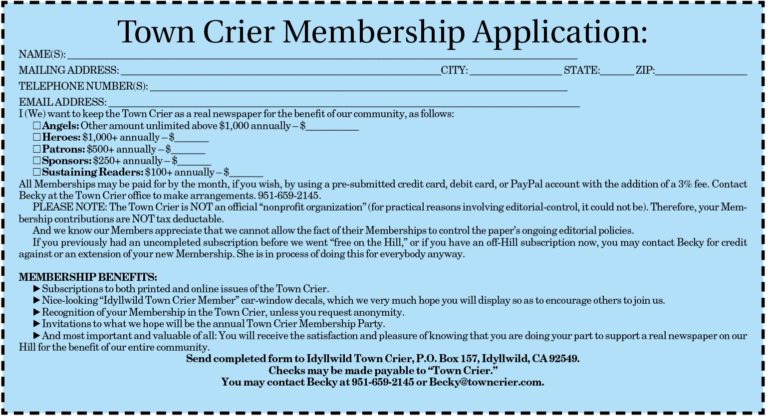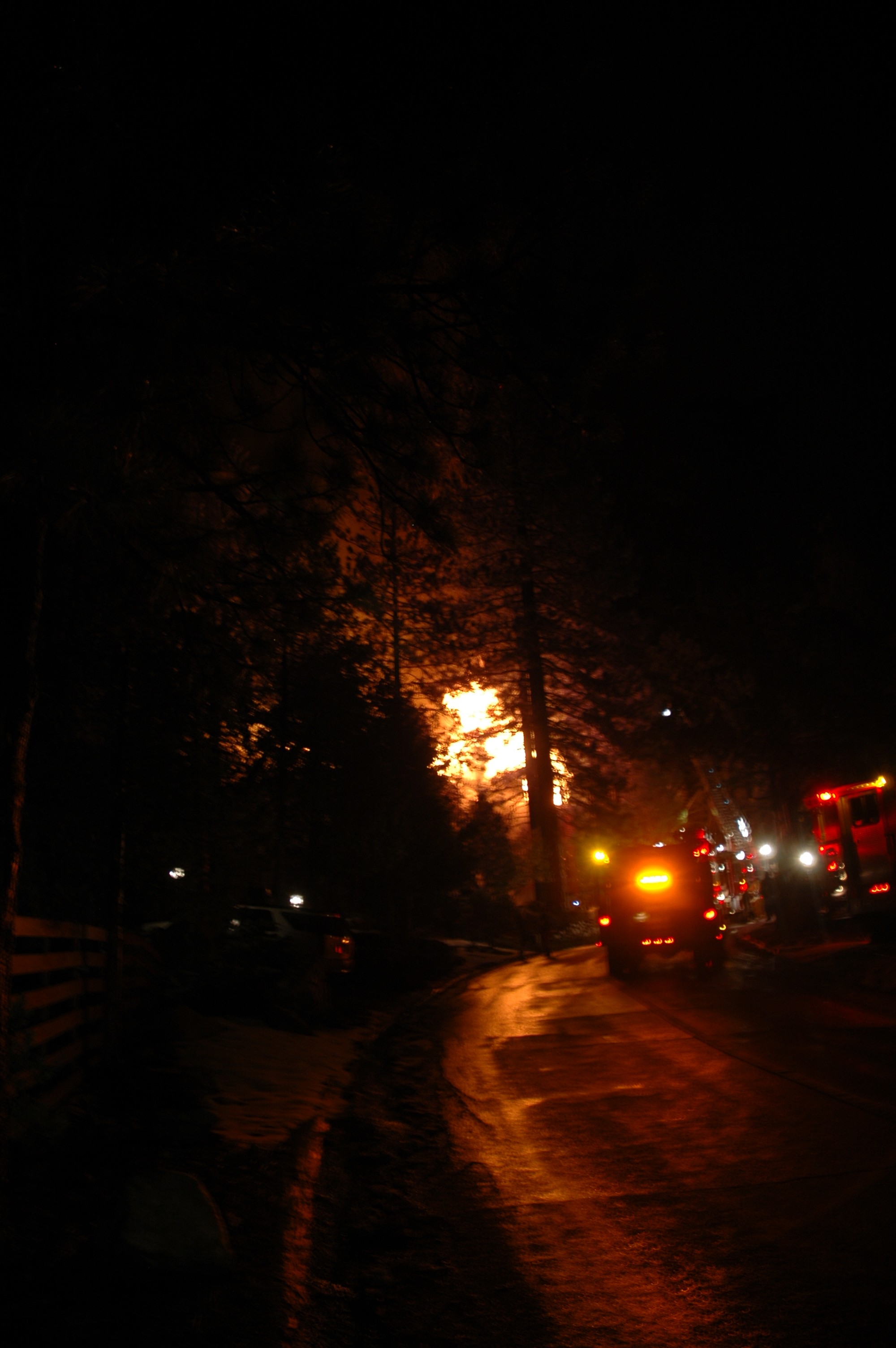The January meeting of the Board of Commissioners of the Idyllwild Fire Protection District included the election of officers, the promotions of five firefighters, and the first mention by Chief Mark LaMont of his plans for retirement and succession. At this first meeting of the year two commissioners, Henry Sawicki and Dennis Fogle, who were unopposed in the November election, were sworn in again. The board then elected new officers. Rhonda Andrewson moved from the role of secretary to that of President. Dan Messina moved from President to Vice President, and Henry Sawicki became Secretary. Stephanie Yost and Dennis Fogle continue as Directors at Large.

Yost thanked IFPD on behalf of the Idyllwild Community Center for their work cleaning up a tree that fell on the ICC playground. Yost noted that IFPD arrived in 15 minutes, and not only removed the tree but cut up the trunk but also transported the wood to the Woodies’ storage area at the Help Center, and then cleaned up the playground.
Five firefighters received promotions. They took an oath of office and received new badges. This included two Battalion Chiefs, James LaMont and Adam Rodriguez. Both are Captains and have served as “Detailed Battalion Chiefs” before taking their Chief’s examinations.
Also receiving new badges were two Firefighter/EMTs, Josh Leih and Jackson Steward. Leih is now an Engineer/Paramedic, and Steward a Firefighter Paramedic. Tyler Ohm is now a Probationary Firefighter/EMT.
Members of the firefighters’ families attended and did the honors of pinning on their new badges. Lamont made a point of thanking the families for the many sacrifices they have made to support the men during their training.
The board packet for the meetings included lengthy lists of the duties of the new Battalion Chiefs. LaMont’s duties will focus on administration and Rodriguez on operations, but there is a lot of overlap. The duties include administrative tasks like payroll and budgeting, but also planning, recruiting, and training. They will be tasked with building relationships with the District’s many cooperating agency partners. They must develop proficiency in ambulance and mutual aid billing and understand things like tax revenue cycles and parcel fees. Essentially, both men are to be able to lead IFPD. They will begin to alternate giving reports at future board meetings.
IFPD meetings often include announcements that personnel have completed some type of training, but this month the packet included a copy of a certificate for a course that Chief Mark LaMont himself completed, the S-520 Advanced Incident Management course. It took place at the headquarters of the National Advanced Fire and Resource Center in Tucson Arizona. LaMont described the course as a “relentless eight days,” and said that of the 87 firefighters who began the course, only 20 finished. Participants engaged in simulations of every type of emergency, gaming out the life and death consequences of their decisions. LaMont said it was the last “cert” he could earn.


This was also the first board meeting at which Chief Mark Lamont used words like “retirement” and “succession plan.” He has been with the District since 2001 and has been laying the groundwork for succession for some time. Having two Battalion Chiefs is part of that planning.
Many members of the USFS were also at the meeting. They, like LaMont, were quick to point out that cooperation between agencies is a point of pride. Several of the USFS firefighters confirmed during a break that pay and staffing for USFS is a serious issue, noting that last year the San Jacinto Ranger District lost four captains to CalFire. Many firefighters get their training with the Forest Service and then are lured to the state agency by better pay. Forest Service pay is set nationally, and adequate pay for many states does not go very far in California. The men also expressed concern that congress is considering deep cuts in positions and pay for federal employees.
The Chief’s report included brief notes on two of the LA County Mutual Aid Incidents that IFPD responded to this month; the Eaton and Palisades Fires. This was the introduction to what LaMont said would be a three-part presentation over the next two meetings, focused on long range planning to address fire risk here in Idyllwild and across the state.
This month’s installment was titled “How did we get here?” In March LaMont plans to review “What are we doing now?,” and at the May meeting he will address the future, “How can we make things better?”
His summary of California’s fire history begins before 1800, with much more forest and fewer inhabitants. At that time, the report estimates that of the present state’s 100 million acres, four to five million burned each year, 4-5%. Since 2000, the annual burn areas have averaged between .01% and 2%, with 2020 being a “standout” year, with over 8,000 fires burning 4.5 million acres.
LaMont adds that our present pattern of habitation puts half a million people in zones said to be at “very high risk of fire,” and close to three million in “high fire hazard severity zones.” He points to three “Ps” behind the situation: population, which has grown in dangerous places; Planning, which has allowed so much flammable construction; and Permission, meaning the complex web of regulations that makes hardening communities difficult.
The report says that the majority of wildfires since 1980 have been started by human activity. The top four causes are equipment use, power lines, arson, and lightning. LaMont asks, “What are we doing to increase the risk of fire?” and provides these answers: misuse of equipment, neglect of power infrastructure maintenance, and “mental health crisis” meaning arson.
LaMont asked the commissioners to consider forming two ad-hoc committees at their next meeting, one to work with him on the long-range plan, and another to look at changing the District’s policy on unused vacation and sick pay. Presently this is paid out at retirement, at an employee’s final rate of compensation, but LaMont said that it would save money to pay it out annually. Changing this would mean a change in the Memorandum of Understanding (MOU) that the District has with its workers.
LaMont also announced he is beginning work on a long-range planning document. He noted that government agencies tend to plan around four-year political cycles, but that big issues are generational and need to be addressed consistently. He wants to create a plan for IFPD that looks at the next 25 years. He said he would be sharing his “work product” with individual commissioners and soliciting comments from them, but they were not to discuss it among themselves outside meetings. The Chief plans to take six months to complete this. “It will not be perfect, but it will be a guide.”
The next meeting will be March 25.








